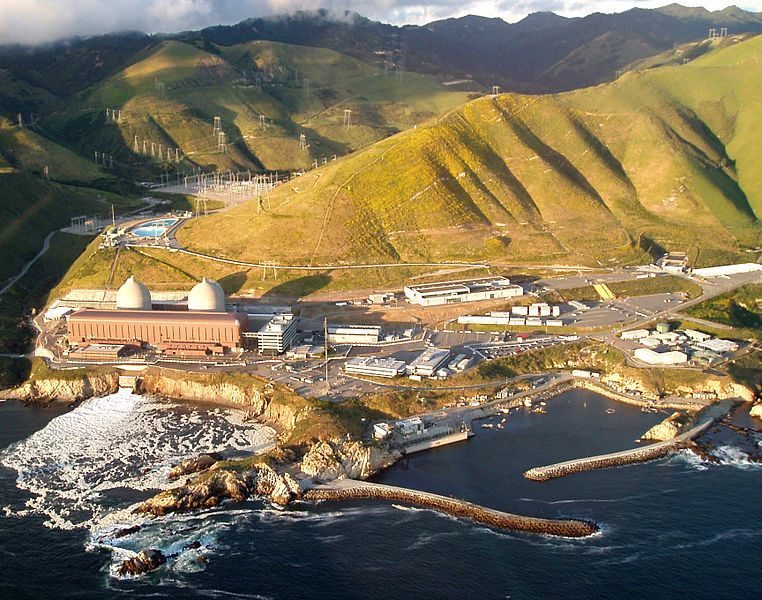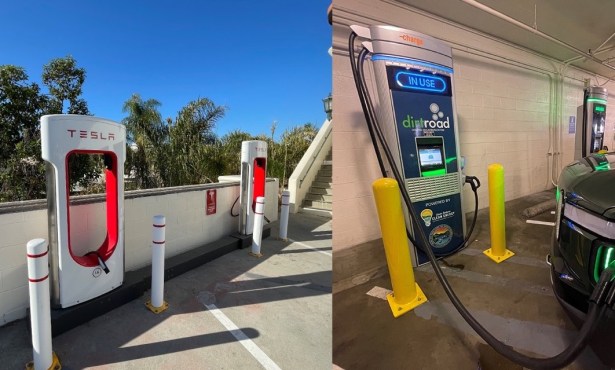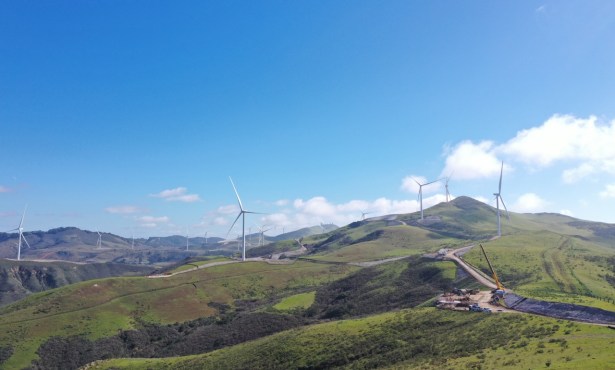Diablo Canyon: Living in the “Kiss Your Ass Goodbye” Zone
Diablo Canyon Safety Committee Hears Fears About Aging Nuclear Plant

For many people living downwind from the Diablo Canyon Power Plant, its two nuclear reactors represent an unavoidable risk to their life and safety. To evaluate those risks and the potential for danger, the Diablo Canyon Independent Safety Committee met June 28-29. The three-member committee heard from managers and engineers at the nuclear plant, as well as members of the public, some of whom described the stress of living near the plant. One woman from nearby Los Osos who hoped to have the plant closed told the committee that she and her neighbors all lived in the “You Can Kiss Your Ass Goodbye Zone.”
In 2018 the utility company announced it was planning to decommission the nuclear facility — its reactor Unit 1 by 2024 and Unit 2 by 2025, when its licenses expired. Though PG&E is currently working to shut down the units, it is also petitioning to renew its license with the Nuclear Regulatory Commission to allow it to run for another 20 years. Governor Gavin Newsom, in a dramatic effort to reduce greenhouse gases, convinced the Democrat-controlled Legislature to pass a bill loaning PG&E with $1.4 billion to extend operations until “the permanent cessation of Units 1 and 2 in 2030.” The length of time before shutdown is another uncertainty that concerns Diablo’s opponents.
Among the issues reviewed by the Safety Committee was the extent of the maintenance that was deferred after PG&E decided to shut down Diablo. PG&E representatives told the committee that all maintenance was back on track.
Since Diablo began operating in 1985, opponents have sounded the alarm about the many fault lines surrounding the plant. At this meeting, opponents continued to raise this issue, but PG&E maintained that there was no new information to change their conclusion that the plant was seismically safe.
During the meeting, most of the presentations and comments were expressed with passion, concern, or carefully chosen words. This last describes Bruce Severance, who, on the last day, at the last hour, told the committee that he had serious concerns that the reactor had become brittle almost to the point of breaking. Though a member of the Diablo Canyon Decommissioning Engagement Panel, he was speaking solely as a private citizen. Severance gave a detailed deconstruction of PG&E documents which he asserted demonstrated that material stress tests in 2003 suggested probable embrittlement by 2021. “We’re way past that date now,” Severance observed.
The Safety Committee’s three members have worked together for more than 15 years, and they listened to the PG&E managers and their persistent opponents with cordiality. Each is a respected professional in the field: Robert Budnitz worked with Lawrence Livermore, the federal Department of Energy, and the Nuclear Regulatory Commission (NRC); Per Peterson is a professor of nuclear science at UC Berkeley; and committee chair Peter Lam is an international expert in reactor safety and an administrative judge emeritus for the NRC.
Severance is an industrial designer and regulatory compliance engineer with an interest in climate change mitigation who lives in San Luis Obispo County. He’s not anti-nuclear, he said, but is a “hound for details.”
His detective work included studying more than 4,000 pages of correspondence between the NRC and PG&E on safety-related issues.
To understand Severance’s contentions, it helps to know about “coupons.” These are samples of reactor materials placed in the vessel, where they will receive a certain bombardment of radioactivity as the reactor operates to produce electricity. This can “age” the coupons, and at intervals, the operator removes one to test the radiation damage. Several of the coupons contain weld material 27204, important because 27204 holds impurities that Westinghouse, which made the reactor, identified as flawed such as to cause premature failure. Having caught the flaw after Unit 1 was installed, Westinghouse corrected the weld material before delivering Unit 2.
Unit 1’s Coupon V appears to be the last one tested, as the entryway into the reactor is stuck, according to PG&E. After it was tested in 2003, the coupon data was invalidated by PG&E, which Severance found troubling. To breach scientific method by changing data in this way, the company interpreted an NRC regulation differently than it had before, which allowed them to be able to use a mathematical calculation to estimate the radiation damage to Coupon V, rather than the test data. The NRC questioned the change repeatedly, Severance said. By the time PG&E withdrew its application in 2018, the question was still unanswered.
What the new calculation did, however, was extend Unit 1’s lifetime — or its “fracture toughness limit.” Changing the embrittlement timeframe from 2021 to 2044 was “a 68 percent shift in the expected life of the plant,” Severance later told the Independent. Given the likelihood of a problem, Severance suggested to the Safety Committee that the solution was to close Unit 1 and allow Unit 2 to run for 10 more years.
At the committee chair Peter Lam’s request for a response, PG&E’s Tom Jones said that embrittlement was a foundational and principal issue in the license renewal, but he had no information at his fingertips that day.
Committee member Bob Budnitz, who had given background on PG&E’s presentations throughout the meeting, said he was open to learning what they would find out. “The probabilities, by the way, of this event are low,” he said, “but they’re not zero, that’s for sure.”
Lam agreed, calling the possibility an “Event V” scenario, recognizable to people like him who’d been in risk assessment the past 50 years: “A major accident sequence — even though the probability is low, the consequences would be horrendous.”
Clarification: The five-year extension in Senate Bill 846 could be interpreted to apply only to the $1.4 billion loan. In reply to a question in this regard, a PG&E spokesperson stated, “The NRC’s standard processes for license renewal — including their safety and environmental reviews — contemplate a 20-year renewed license term, a period that will allow the state maximum flexibility to ensure electric resource adequacy. The actual operating duration of DCPP will be controlled by the State legislative and regulatory processes.”



